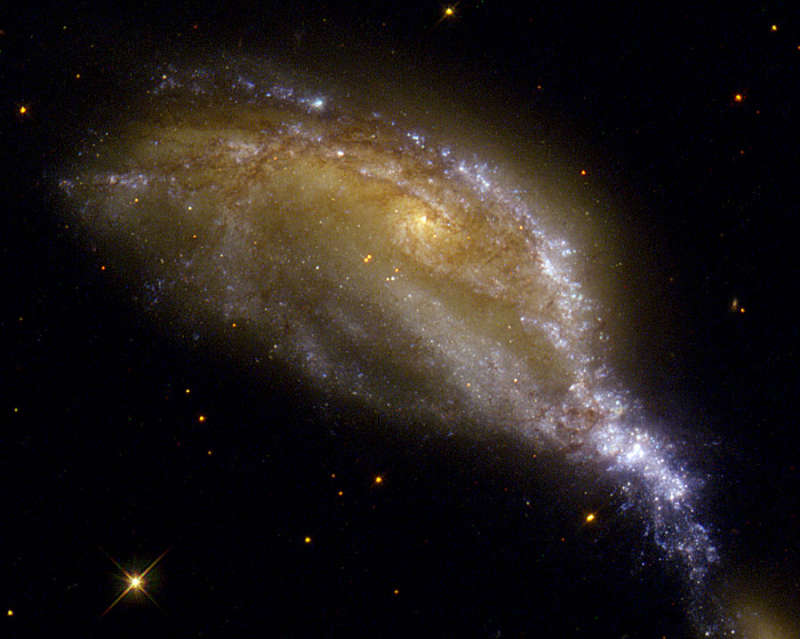
|
Explanation: Galaxies don't normally look like this. NGC 6745 actually shows the results of two galaxies that have been colliding for only hundreds of millions of years. Just off the above digitally sharpened photograph to the lower right is the smaller galaxy, moving away. The larger galaxy, pictured above, used to be a spiral galaxy but now is damaged and appears peculiar. Gravity has distorted the shapes of the galaxies. Although it is likely that no stars in the two galaxies directly collided, the gas, dust, and ambient magnetic fields do interact directly. In fact, a knot of gas pulled off the larger galaxy on the lower right has now begun to form stars. NGC 6745 spans about 80 thousand light-years across and is located about 200 million light-years away.
|
January February March April May June July August September October November December |
| ||||||||||||||||||||||||||||||||||||||||||||||||
NASA Web Site Statements, Warnings, and Disclaimers
NASA Official: Jay Norris. Specific rights apply.
A service of: LHEA at NASA / GSFC
& Michigan Tech. U.
Based on Astronomy Picture
Of the Day
Publications with keywords: colliding galaxies
Publications with words: colliding galaxies
See also:
- APOD: 2025 May 7 Á Galaxy Wars: M81 versus M82
- APOD: 2024 July 30 Á Arp 142: Interacting Galaxies from Webb
- APOD: 2023 September 25 Á Arp 142: The Hummingbird Galaxy
- APOD: 2023 January 23 Á The Colliding Spiral Galaxies of Arp 274
- Galaxy Wars: M81 and M82
- NGC 1316: After Galaxies Collide
- NGC 4676: When Mice Collide
